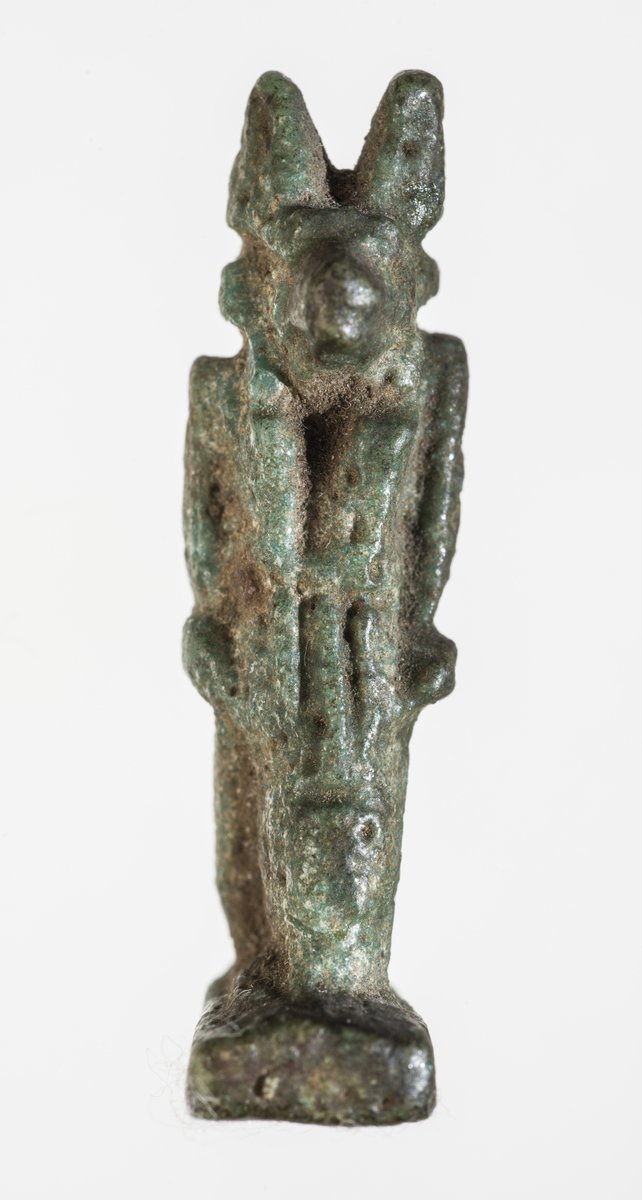
Anubis
Egyptian Art
| Place of production | Egypt |
|---|---|
| Date | 2100–1870 BC |
| Object type | tomb equipment |
| Medium, technique | Wood, gessoed, painted |
| Dimensions | 10.2 × 4 × 3.5 cm |
| Inventory number | 84.160-E |
| Collection | Egyptian Art |
| On view | This artwork is not on display |
The incomplete, heavily worn wooden statuette, with further minor damages all across its gesso-coated surface, most likely depicts a member of the rowing crew in a wooden model boat coming from a First Intermediate Period or early Middle Kingdom burial. The body of the seated male figure was painted in brick red as usual, and a white apron covers his entire lower body from the waist down. The legs have been abstracted in a block-shaped base, the front part of which has been broken off, and both arms, once attached to the torso with dowels, are now also missing. The curls of his rich, black hairstyle, modelled in raised relief, are held together with a white headband tied at the back. The mouth, the eyebrows, the contours of his white-painted eyes, as well as the iris are also indicated in black. The figure’s broad and arched chest reveals a strong physique, and his somewhat asymmetric posture is consistent with the activity he intended to portray: he leans slightly to the right, and the relative position of the shoulders suggests that he raised his left arm a little bit higher than his right, which corresponds nicely to the customary posture of oarsmen taking place on the right side of the boat. On the bottom of the statuette, traces of the original tapping can still be seen, which served to fix the oarsman figure to the plank of the deck.
For the ancient Egyptians, the primary means of travel and transport was always by boat, so it is less surprising that the first model boats, still made of clay, appeared as early as in the burials of the Pre-Dynastic Period. Wooden pieces that modelled different types of ships and were equipped with a crew became widespread grave goods only later, from the second half of the Old Kingdom onwards. By the power of magical representation, these models placed inside the tomb allowed the deceased to travel freely: he could cross from the east bank of the Nile (i.e., the land of the living) to the west (i.e., the realm of the dead), make pilgrimages to distant holy places (e.g., Abydos), or traverse the vast watery regions of the sky and the underworld in the company of the gods.
This record is subject to revision due to ongoing research.